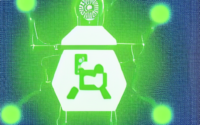The Role of AI in Disaster Response and Recovery
The Role of AI in Disaster Response and Recovery
Introduction to AI in Disaster Response:
Artificial Intelligence (AI) has been increasingly playing a vital role in disaster response and recovery efforts. With the ability to process and analyze large amounts of data quickly, AI technologies have the potential to significantly improve the efficiency and effectiveness of emergency response across various types of disasters, including natural disasters like earthquakes, hurricanes, and floods, as well as human-made disasters such as industrial accidents or terrorist attacks.
AI Applications in Disaster Response:
There are several key applications of AI in disaster response. One of the most important applications is predictive modeling, where AI algorithms analyze historical data to predict the likelihood and impact of future disasters. This can help emergency responders better prepare for and allocate resources ahead of time. Additionally, AI can be used for real-time monitoring of disaster events, such as using satellite imagery and sensors to track the spread of wildfires or the movement of hurricanes. AI-powered drones are also being increasingly used for disaster assessment and search and rescue missions, allowing responders to quickly survey affected areas and locate survivors.
AI in Post-Disaster Recovery:
In addition to its role in immediate disaster response, AI can also play a crucial role in post-disaster recovery efforts. AI technologies can help with damage assessment, identifying areas of critical infrastructure that require immediate repair or rebuilding. Machine learning algorithms can analyze satellite images and sensor data to assess the extent of damage to buildings and infrastructure, helping prioritize recovery efforts. AI can also assist in resource optimization during the recovery phase, helping allocate resources such as food, water, and medical supplies more efficiently to areas in need.
Challenges and Limitations of AI in Disaster Response:
While AI has shown great promise in improving disaster response and recovery efforts, there are several challenges and limitations that need to be addressed. One key challenge is the need for high-quality and real-time data, as AI algorithms rely heavily on accurate and timely information to make effective decisions. In some cases, data availability and quality may be limited in the aftermath of a disaster, which can hinder the effectiveness of AI-based systems. Additionally, there are concerns around the ethical use of AI in disaster response, particularly regarding issues of privacy, data security, and potential biases in AI algorithms.
Future Directions for AI in Disaster Response:
Looking ahead, there are several exciting opportunities for the further integration of AI technologies in disaster response and recovery efforts. Advancements in AI-driven robotics could enable more autonomous and efficient search and rescue operations in hazardous environments. The development of AI systems that can adapt and learn in real-time could also enhance the agility and effectiveness of disaster response teams. Interdisciplinary collaborations between AI researchers, emergency responders, and policymakers will be essential to harnessing the full potential of AI in improving disaster preparedness and response strategies.


